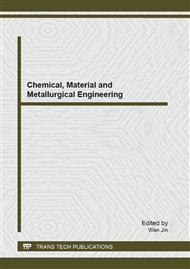p.3
p.9
p.14
p.23
p.28
p.31
p.35
p.40
Manufacturing of Hydride-Forming Alloys from Mixed Titanium-Iron Oxide
Abstract:
Synthesis of TiFebased metal hydride-forming alloy from mixed titanium iron oxide (ilmenite, FeTiO3) was carried out by a two-stage reduction of the latter using H2 and CaH2 as reducing agents. The reversible hydrogen absorption capacity of the TiFe based material was about 0.5 wt. % H, that is significantly lower than the corresponding values (~1.8 wt. % H) reported in the literature. The main reason for that was in too high amount of oxygen present in the as-prepared TiFe alloy. Thus in order to improve the hydrogen absorption of the raw TiFe, the material was further alloyed together with Zr, Cr, Mn, Ni and Cu to yield an AB2 alloy. For the as-prepared AB2 alloy, the reversible hydrogen sorption capacity was about 1.3 wt. % H at P = 40 bar and >1.8 wt. % at P = 150 bar, which is acceptable for stationary applications. Finally, the material was found to be superior when compared to known AB2-type alloys, with regard to their activation and poisoning tolerance.
Info:
Periodical:
Pages:
14-22
Citation:
Online since:
August 2013
Authors:
Keywords:
Price:
Сopyright:
© 2013 Trans Tech Publications Ltd. All Rights Reserved
Share:
Citation:


